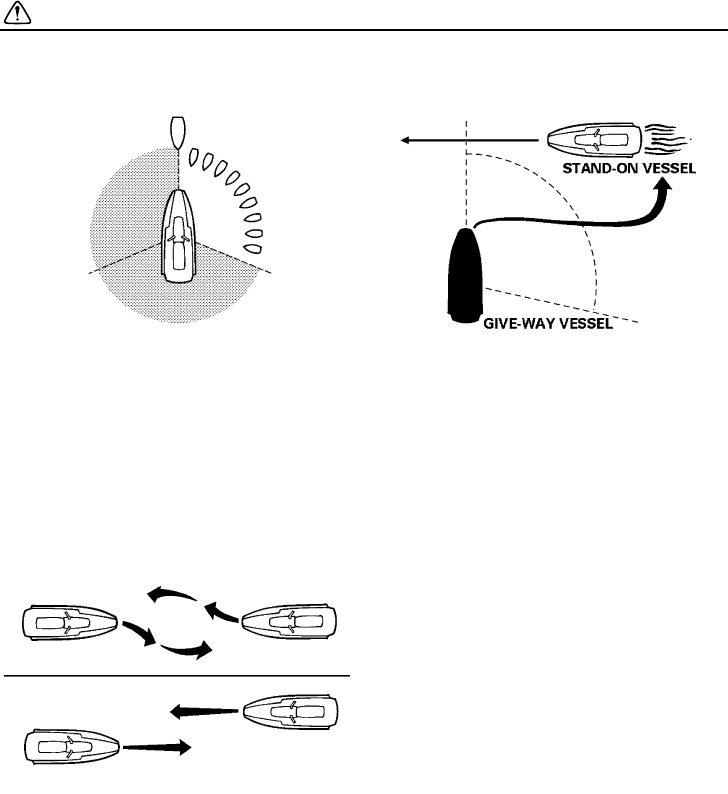
Safety information
21
give-way vessels). Both you and the meeting
vessel must alter course to avoid each other.
Meeting
If you are meeting another power-driven ves-
sel head on, and are close enough to run the
risk of collision, neither of you has the right-of-
way! Both of you should alter course to avoid
an accident. You should keep the other vessel
on your port (left) side. This rule does not ap-
ply if both of you will clear one another if you
continue on your set course and speed.
Crossing
When two power-driven vessels are crossing
each other’s path close enough to run the risk
of collision, the vessel which has the other on
the starboard (right) side must keep out of the
way of the other. If the other vessel is on your
starboard (right) side, you must keep out of its
way; you are the give-way vessel. If the other
vessel is on your port (left) side, remember
that you should maintain course and direction,
provided the other vessel gives you the right-
of-way as it should.
Overtaking
If you are passing another vessel, you are the
give-way vessel. This means that the other
vessel is expected to maintain its course and
speed. You must stay out of its way until you
are clear of it. Likewise, if another vessel is
passing you, you should maintain your speed
and direction so that the other vessel can
steer itself around you.
Other special situations
There are three other rules you should be
aware of when riding your watercraft around
other vessels.
Narrow channels and bends
When navigating in narrow channels, you
should keep to the right when it is safe and
practical to do so. If the operator of a power-
driven vessel is preparing to go around a
bend that may obstruct the view of other water
vessels, the operator should sound a pro-
longed blast of four to six seconds on the
whistle. If another vessel is around the bend,
it too should sound the whistle. Even if no re-
ply is heard, however, the vessel should still
proceed around the bend with caution. If you
navigate such waters with your watercraft,
you will need to carry a portable air horn,
available from local marine supply stores.
UF1W10E0.book Page 21 Monday, November 26, 2007 3:57 PM


















